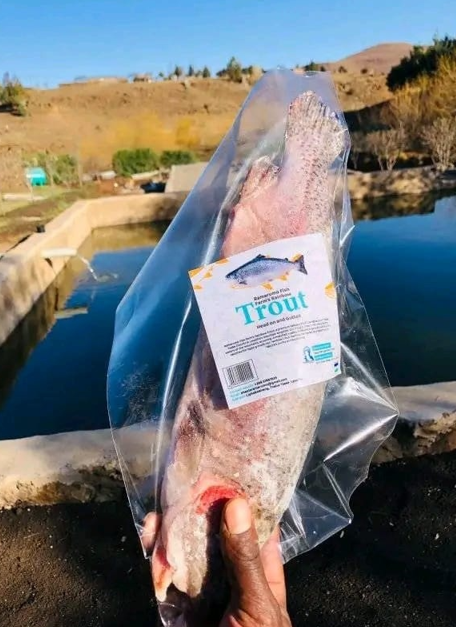By Thoboloko Ntšonyane
The aquaculture and fisheries sector is beginning to claim its place on the national development agenda.
This renewed energy was evident at a recent three-day stakeholders’ workshop in Maseru, where the long-awaited policy and strategy for fisheries and aquaculture was validated.
The gathering drew a wide range of participants, from government ministries to private investors, farmers, academics, civil society groups, and development partners.
Among those present were representatives from the Ministry of Agriculture, Food Security and Nutrition, as well as Natural Resources, Environment and Forestry, Tourism, Health, Trade, Defence, and the Prime Minister’s Office.
Development partners such as the FAO, Lesotho Highlands Development Authority, Lesotho National Development Corporation, and World Vision also weighed in, underscoring the cross-cutting importance of this sector.
For years, Lesotho has lagged in fisheries, relying heavily on imported fish while underutilising its abundant rivers, dams, and wetlands. But the tide is turning. According to the Food and Agriculture Organisation (FAO), nearly all of Lesotho’s fish production already comes from aquaculture. With proper policy direction, the sector could expand rapidly, offering a steady supply of nutritious food, new jobs, and much-needed export revenue.
‘Mankeane Mofoti, who heads the Fisheries and Aquaculture Section in the Ministry of Agriculture, Food Security and Nutrition, said the policy’s validation is a turning point.
“After the meeting, we are expected to implement the different key priority areas so that aquaculture can thrive and improve in the country,” she explained.
The new framework identifies seven critical areas: governance and coordination, capacity development, sustainable aquaculture, market and trade, social responsibility with gender equality, research and information dissemination, and financing and investment. Each of these, if properly addressed, could transform the sector from a promising niche into a mainstream contributor to the economy.
Already, some farmers are showing what is possible. Lesotho now boasts a handful of trout producers and small-scale farmers rearing rainbow fish, while others are experimenting with catfish.
“We have been doing intensive capacity building in all districts, helping farmers understand production and aquatics,” Mofoti said.
While the Ministry does not offer financial assistance, Mofoti said it provides technical support such as site selection, pond construction, and sourcing fingerlings.
Senior lecturer, ‘Mabokang Motsienyane, from the Lesotho Agricultural College welcomed the policy, noting that it would attract investors and give structure to a sector that has long been fragmented.
“What I also liked is that there is going to be a legal institution and a capacity-building programme, supported by a curriculum,” she said.
She added that research and education would be key, insisting that awareness should start early.
“A Mosotho child, from the moment they are born, should be empowered and taught how to earn a living by cultivating fish.”
For her, the challenge lies not just in production but also in public awareness.
“Many Basotho only know about tinned fish and don’t realise that our rivers and dams can provide fresh fish, however, pollution remains a danger, so education is vital. These documents must not gather dust; they need to be shared widely,” she stressed.
Among the younger generation of farmers, the new policy has sparked hope. Twenty-five-year-old pisciculturist Khaolo Ramarumo of Thaba-Tseka, owner of Ramarumo Fish Farm, described contributing to the policy as a milestone.
His farm produces 15 to 20 tonnes of fish annually, supplying mostly hospitality businesses, but demand far outstrips supply.
“This is not even enough. People eat every day,” he said with a smile.
Ramarumo and others in the sector are now thinking bigger. With the policy in place, they aim to increase national production from the current 2,100 tonnes to 8,000 tonnes by 2035.
Mohale Dam, along with other reservoirs, has been identified as a potential hub for scaling up production.
“Our biggest target is to farm in the Mohale Dam. If we can achieve that, the industry will change completely,” Ramarumo said.
The broader benefits are clear. According to the Pan-African Fisheries and Aquaculture Policy Framework, fisheries contribute not only to food and nutrition security but also to employment, exports, biodiversity, and climate resilience.




